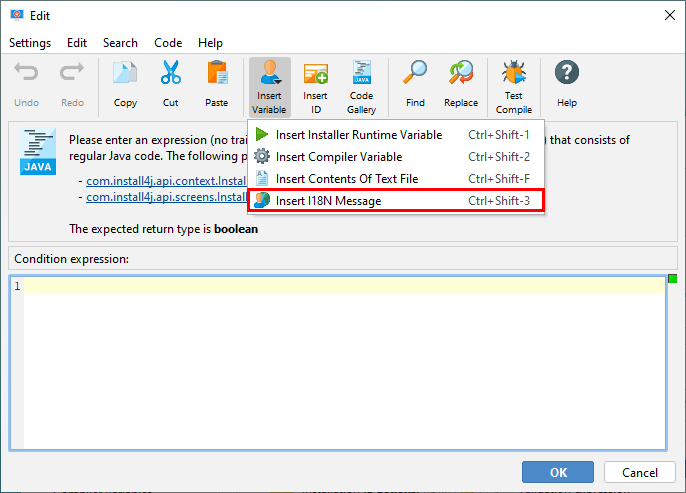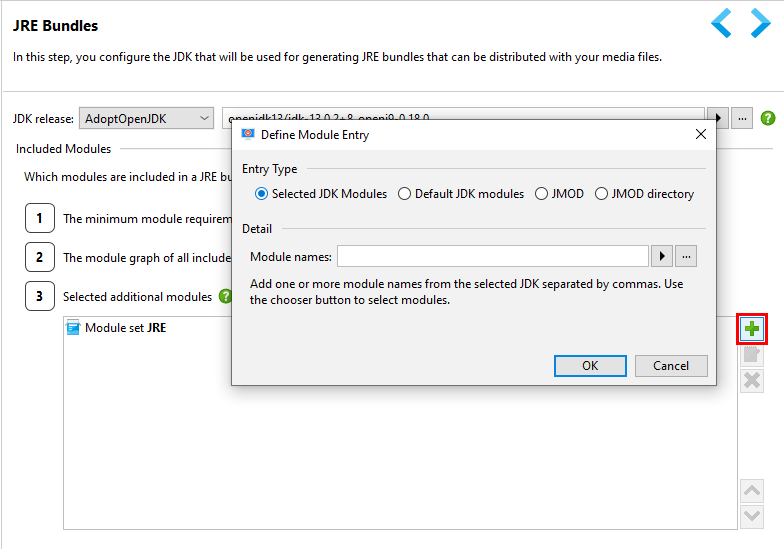
Using install4j how to#
It's stable, low on system resources and if you don't know how to deliver a Java application, install4j might be able to help you out. What's more, it's ideal for multiple platforms since all you need for it to work is Java. On an ending note, it can be pretty difficult to build up an installer from scratch, but with applications like install4j it all becomes a charm. Several options can be set, such as extra verbose output, disabling LZMA and Pack200 compression, when it comes to output attributes. Furthermore, you can test out the product and its deployment before building the installer. Your projects can be merged in case you want to plan future updates. The main window along with each step of the way can be customized with pictures, text, and with programming knowledge these can go beyond what the application offers. A clever management of file deployment can be done, with a workspace that features a tree view and the possibility to arrange files and folders as you want them to be deployed on the end user's machine.Ĭustomization is also something you can consider adjusting, with a few tools dedicated to this task. In the steps that follow you get to manage file specific options. Various customization optionsįrom name, title and version to language packs, as well as compiler variables, you are able to provide all there is to know. These can be visited anytime in case you want to make further adjustments, with a side panel providing quick access to major areas like general settings, files, launchers, media and a few more.
Using install4j series#
The application takes you through a series of steps that make sure no details are left aside. With tools like install4j these can easily be created if applications you want to deliver are created using Java. When it comes to computer applications, deployment is the first step, so it needs to be clean, safe and understandable. INFO: Initializing ProtocolHandler ġ0:14:00 AM .It's always a good idea to take into consideration the first impression you or your product makes. INFO: The APR based Apache Tomcat Native library which allows optimal performance in production environments was not found on the : /usr/java/packages/lib/amd64:/usr/lib64:/lib64:/lib:/usr/libġ0:14:00 AM init INFO: Command line argument: -Djava.io.tmpdir=/opt/tomcat/apache-tomcat-7.0.82/tempġ0:13:59 AM .AprLifecycleListener lifecycleEvent I tested installation under different Linux systems and it seems that the problem is probably by settings in installation or in WindowManager.
Using install4j install#
INFO: Command line argument: =/opt/tomcat/apache-tomcat-7.0.82 I try to install program but I do not know what is in dialog box. INFO: Command line argument: -Dcatalina.base=/opt/tomcat/apache-tomcat-7.0.82 INFO: Command line argument: =/opt/tomcat/apache-tomcat-7.0.82/endorsed INFO: CATALINA_HOME: /opt/tomcat/apache-tomcat-7.0.82 INFO: CATALINA_BASE: /opt/tomcat/apache-tomcat-7.0.82 INFO: Server version: Apache Tomcat/7.0.82 Using CLASSPATH: /opt/tomcat/apache-tomcat-7.0.82/bin/bootstrap.jar:/opt/tomcat/apache-tomcat-7.0.82/bin/tomcat-juli.jarġ0:13:59 AM .VersionLoggerListener log Using CATALINA_TMPDIR: /opt/tomcat/apache-tomcat-7.0.82/temp Using CATALINA_HOME: /opt/tomcat/apache-tomcat-7.0.82

Using CATALINA_BASE: /opt/tomcat/apache-tomcat-7.0.82 Output of catalina.out tomcat]$ cat /var/log/tomcat/catalina.out

Server B - Doesn't (Even though indicates "started") Using CATALINA_BASE: /opt/tomcat/current Using CLASSPATH: /opt/tomcat/current/bin/bootstrap.jar:/opt/tomcat/current/bin/tomcat-juli.jar Using CATALINA_TMPDIR: /opt/tomcat/current/temp Server A - Works Using CATALINA_BASE: /opt/tomcat/current The server was installed using downloadeded binaries, custom init script, etc using an Ansible script that worked on 3 servers in total (all same OS, Java) thus far.

However, one server doesn't want to start. In my case, I have these two servers configured identically (AFAIK). Most hits on google seem to indicate a specific class at the end of the log entry. Notice, no specific class specified at the end of the log entry. When I attempt to startup Tomcat (7.0.82) on RHEL6/Java7, the logs will display this:


 0 kommentar(er)
0 kommentar(er)
